
When should I wear an orthodontic retainer? And other common orthodontics questions.
Orthodontics is a complex part of dentistry, so it’s natural for patients to have a lot of questions before starting their treatment.
Since every treatment journey is unique to each patient, it’s difficult to answer questions about orthodontics. However, there are some very common questions that our dentists in Hounslow hear from their patients time and time again.
Read on to learn the most common questions we hear about orthodontics and orthodontic retainers.
When should I wear an orthodontic retainer?
At the end of your orthodontic treatment, your dentist will ask you to switch to wearing an orthodontic retainer at night time. This will help to keep your teeth in the correct alignment. If you don’t wear your orthodontic retainer at night time, your teeth may gradually return to their previous alignment.
If you stop wearing your retainer and your teeth shift out of alignment, you would need to start orthodontic treatment again. This is why it is vital to wear your orthodontic retainer every night to help keep your smile looking perfect.
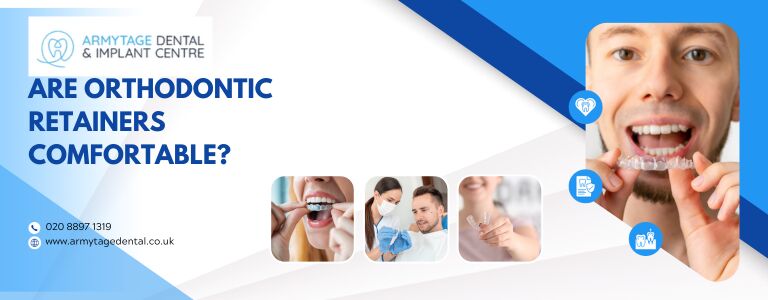
Are orthodontic retainers comfortable?
It might take some time to get used to your orthodontic retainer, but once you are accustomed to wearing it you shouldn’t notice it at night time. If you find that it is preventing you from sleeping, it would be advisable to visit the dentist to see if there is anything that can be done to make your orthodontic retainer more comfortable.
If you have stopped wearing your retainer for a while and then start wearing it again, you might find that it is more uncomfortable than usual. This is because your teeth may have moved out of alignment so the retainer is putting pressure on your teeth. If this happens, visit your dentist to find out the next steps. If it has been too long, you may need to start orthodontic treatment again. Otherwise, your dentist will be able to adjust your retainer so that the teeth don’t shift any further.
How do you clean an orthodontic retainer?
To keep your retainer clean and hygienic, you’ll need to give it a deep cleaning once a day. Many people choose to use orthodontic apparatus cleaning tablets as this is the simplest way to keep things hygienic.
Soaking your retainer in a cleaning solution will help to remove any bacteria that may be lurking. You can also deep clean your retainer once a week using things like baking soda, white vinegar or hydrogen peroxide.
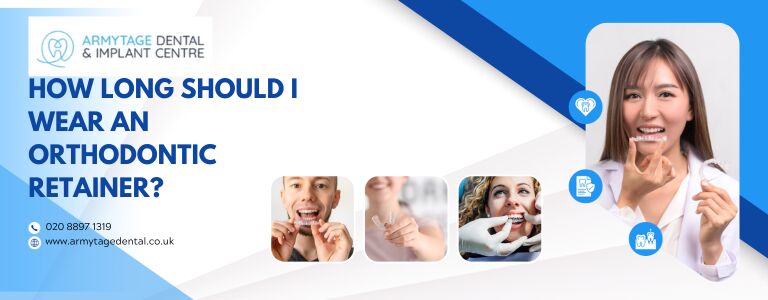
How long should I wear an orthodontic retainer?
You will need to continue wearing your orthodontic retainer for as long as you want to keep your teeth perfectly aligned. If you don’t like wearing the retainer at night time, you could also opt for a permanent retainer that is bonded to the back of your teeth. This would allow you the flexibility to forget about wearing a retainer at night time.
How long do orthodontic retainers last?
You should think about replacing your orthodontic retainer every 5-10 years. If you care for it properly, it should last a long time. If you notice anything is loose on your retainer, you should stop wearing it and return to your dentist for a repair or replacement.
Likewise, if you misplace your retainer, visit your dentist as soon as possible to arrange a replacement. If you stop wearing your retainer for too long, your teeth could start to shift out of alignment again and this could require further orthodontic treatment to correct.
Can I force my retainer to fit again?
No, you shouldn’t force your retainer or attempt to adjust it at home. Your dentist can adjust your retainer if needed, so always visit the dentist if you find your orthodontic retainer has become uncomfortable.
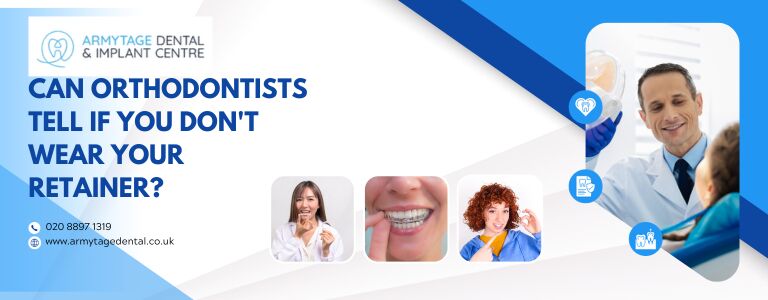
Can orthodontists tell if you don't wear your retainer?
Yes, your orthodontist will be able to tell from the alignment of your teeth if you aren’t wearing your retainer at night time. Your orthodontist will not force you to wear your retainer if you really don’t want to, but they will encourage you to consider this for the success of your treatment.
If you stop wearing it, your teeth will begin to shift and it may become uncomfortable to try to wear your retainer again. If this happens, you might have to think about starting orthodontic treatment again.
What does orthodontics treat?
Orthodontics addresses more than just alignment and aesthetics. It can also help to improve the function of your bite by making sure that your upper and lower jaw are working together. If you have missing teeth, the remaining teeth may drift into the space left behind, but orthodontics can help to correct the alignment.
What is the difference between a dentist and an orthodontist?
An orthodontist is a special kind of dentist. To be called an orthodontist, an individual must go through additional specialist training. Both dentists and orthodontists can carry out orthodontic treatment, but only an orthodontist will specialise in this area of dentistry.
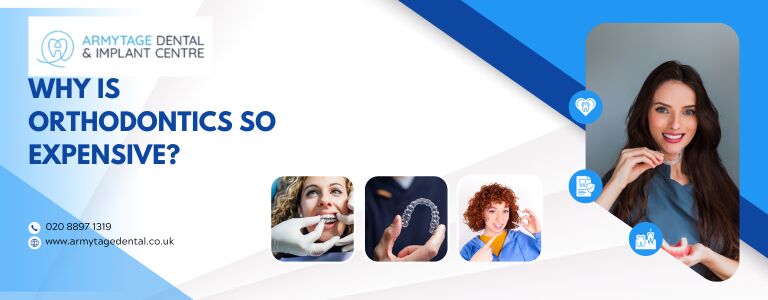
Why is orthodontics so expensive?
Orthodontics might seem expensive, but it is an extensive treatment plan that takes place over many months and sometimes even years. The cost covers the supervision of your treatment and the materials required. In the case of Invisalign, the cost of treatment covers the custom made aligners that will gradually shift your teeth into the correct position. For traditional fixed braces, the cost will cover the adjustments required to keep your treatment on track.
What age is appropriate for orthodontics?
Anyone can undergo orthodontic treatment at any age. Many adults are turning to orthodontics later in life to address alignment issues. Perhaps you had braces as a teenager but stopped wearing your orthodontic retainer and so your teeth have shifted out of alignment? Or perhaps you didn’t qualify for orthodontics as a teenager but would like to improve your smile later in life?
Whatever your reason for wanting to explore orthodontics, there is no reason you shouldn’t be able to do this later in life. Invisalign offers flexibility and discretion, which is ideal for older orthodontic patients.
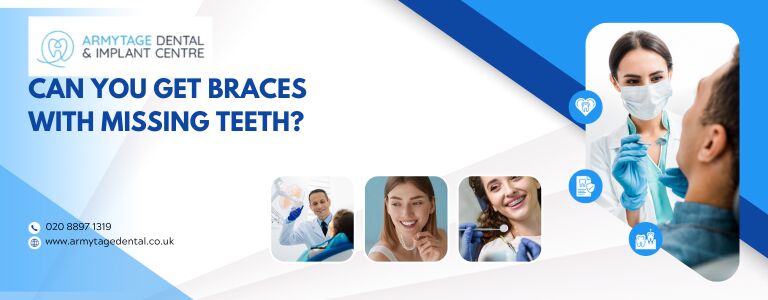
Can you get braces with missing teeth?
Yes, you can get braces with missing teeth, and this can often be an excellent way to resolve gaps in your smile. When you lose a tooth, the surrounding teeth can drift into the space and fall out of alignment. Orthodontics can help to correct this issue by helping to move the teeth into the space and maintain good alignment.
If you are concerned about gaps in your smile, orthodontics could be the answer. You could also explore other restorative options such as a bridge or veneer. A dental implant could also be an excellent option to help replace a missing tooth.
What is the cheapest way to straighten teeth?
If you are only concerned about your teeth appearing to be aesthetically straight then the most cost-effective option wouldn’t involve orthodontics at all. You could create the illusion of straighter teeth using a veneer restoration or even with composite bonding.
If you are set on orthodontics, there are cheaper options that will only address the front top teeth that are visible when you smile. This could allow you to achieve a beautiful smile without straightening all of your teeth.
Full orthodontics on the top and bottom arch would be the most expensive option but this is also the most comprehensive. Straight teeth not only look better, but they are also easier to care for. This means that you will be able to brush your teeth more easily and flossing will also be more effective. Properly aligned teeth will also ensure that your bite is functioning correctly.
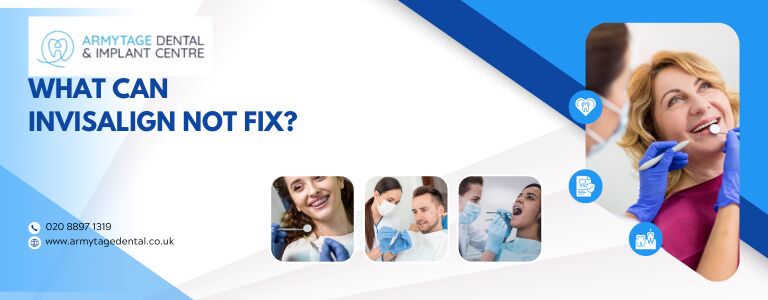
What can Invisalign not fix?
Invisalign is not always the best option for achieving the perfect smile. If you have very large gaps in your teeth then traditional braces might be a better option. Invisalign is also not suitable if you have had other restorative work such as a bridge.
If you have shorter teeth, then Invisalign might now work for you. Likewise, if you have a severe overbite, or if teeth are too far rotated. And finally, intrusion and extrusion cannot be fixed using Invisalign. This means that it cannot raise or lower the position of your teeth.
If you’re curious about Invisalign but aren’t sure if you would be the right candidate, get in touch to arrange a consultation today.
What can you not eat with braces?
With Invisalign orthodontics, no foods are off-limits because you take the retainers out to eat and drink. You cannot drink any warm liquids while wearing your retainer, as this can warp the plastic and make them less effective. You also cannot chew gum while wearing Invisalign as the chewing gum will stick to it.
With fixed braces, there are some foods you will need to avoid as they could get caught in the wires or damage the brackets. Hard foods like pizza crust, nuts or hard sweets are best avoided. You should also avoid anything too sticky, like chewing gum or toffee.
Certain foods like apples, corn on the cob and carrots may also pose a problem. You can eat these foods, but you should chop them into bite-sized pieces first.
How do I start treatment?
The first step to starting orthodontic treatment is to book your consultation with Armytage Dental today!
Call us to make an appointment
We are accepting new patients and our team are here to help
Call us now
Teeth Whitening Offer £270
Teeth Whitening and Hygiene offer for £270 until end of April 2021.
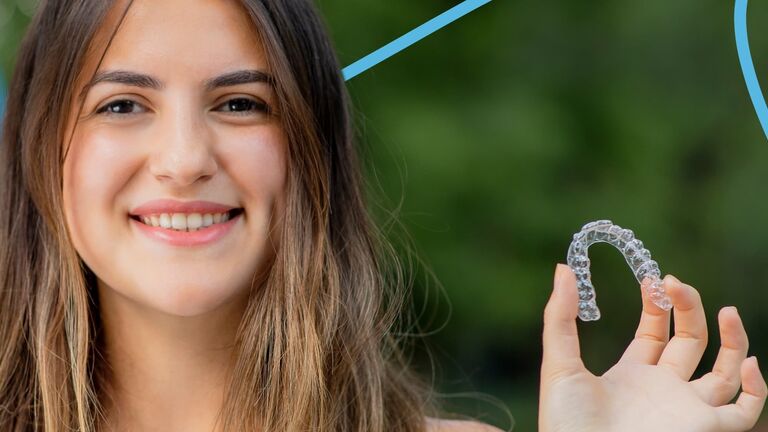
Invisalign FREE teeth whitening
Invisalign FREE teeth whitening
08.04.2024
5 Signs You Should See an Endodontist
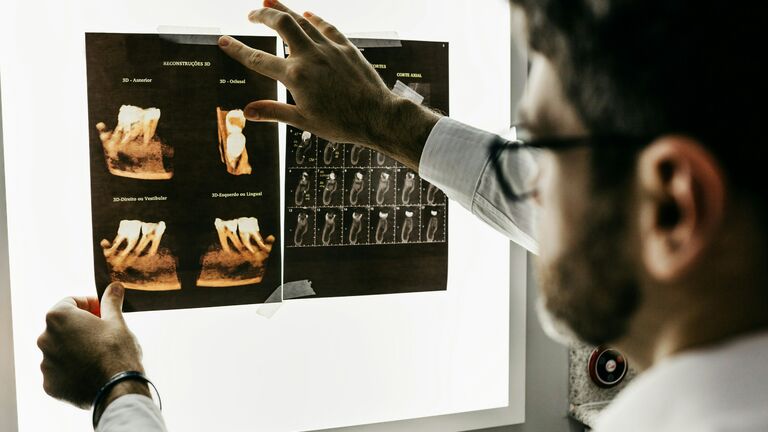
04.04.2024
Can I Get Implants with Gum Disease?
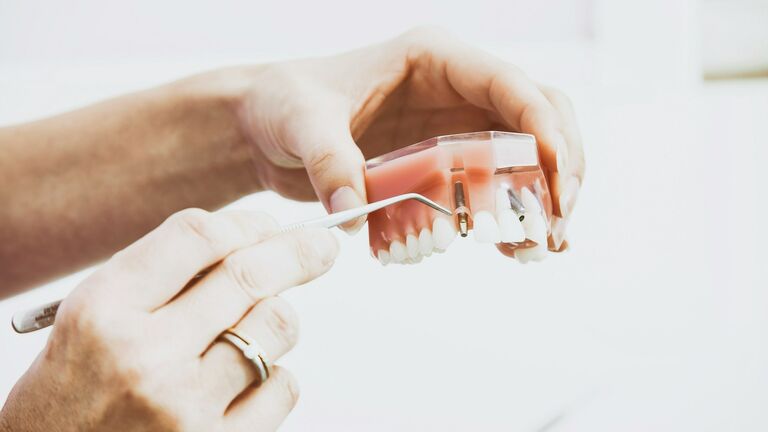
04.04.2024
What Can I Eat After Dental Implant Surgery?

Call us to make an appointment
We are accepting new patients and our team are here to help